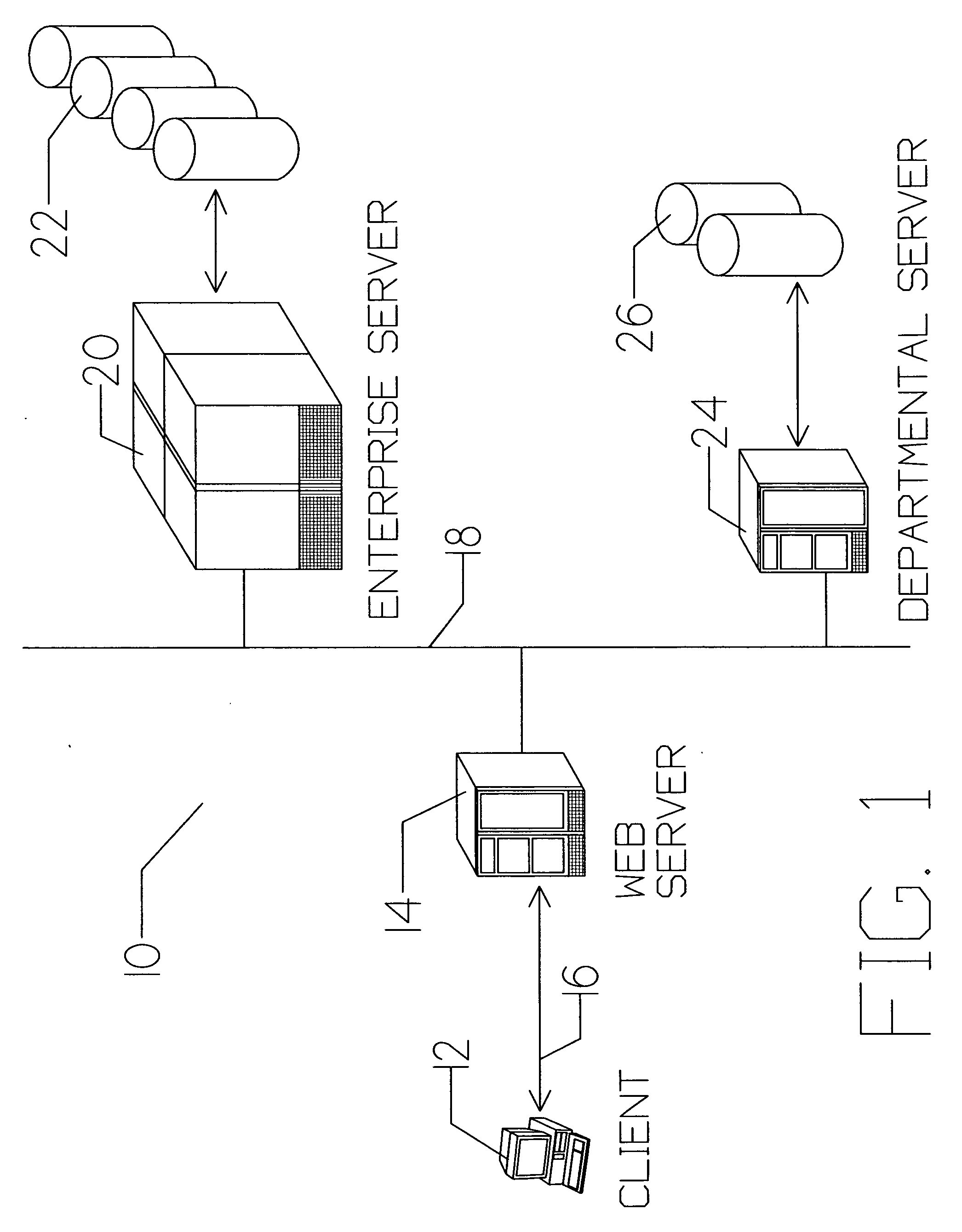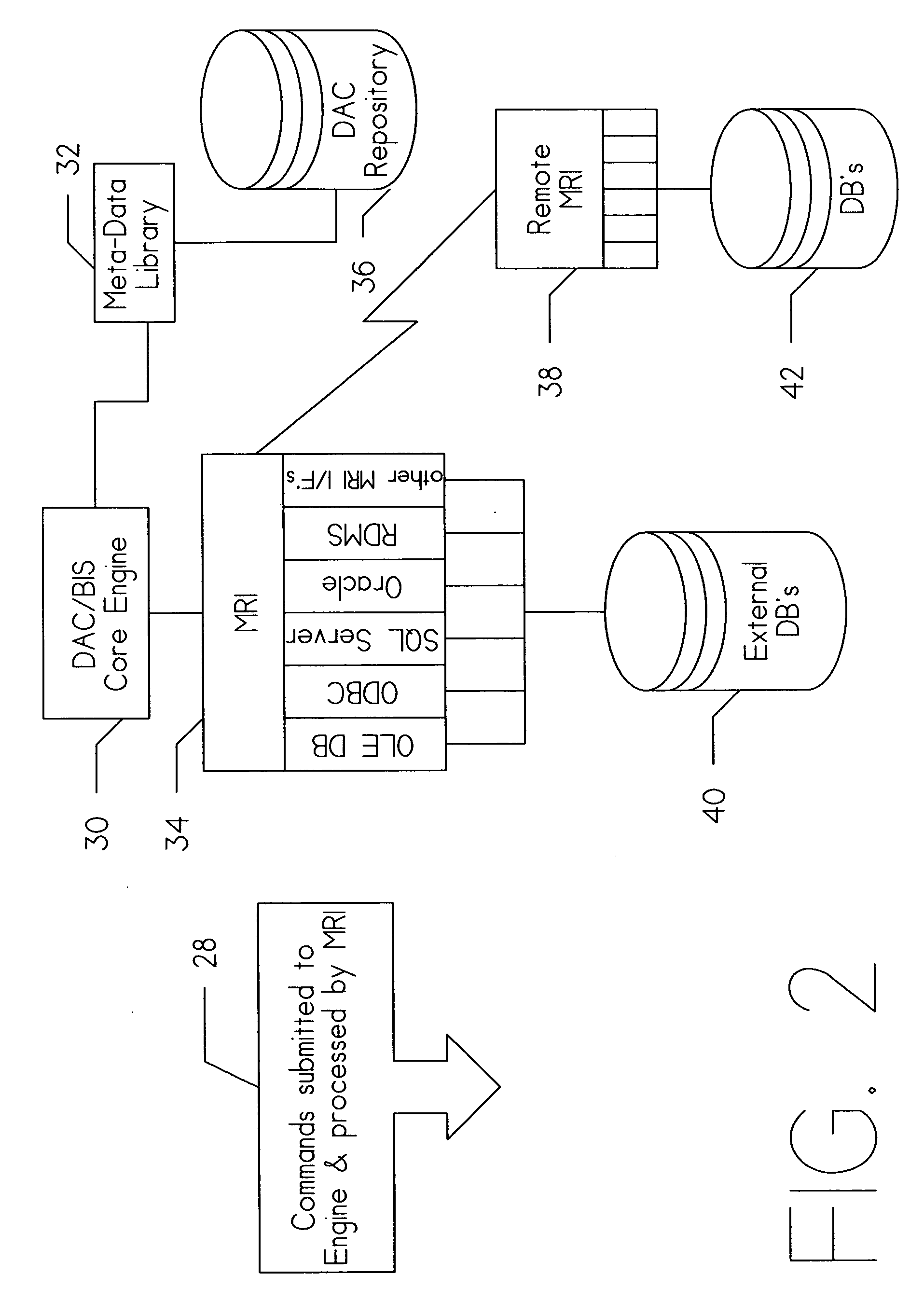Method and apparatus for mapping data types from heterogeneous databases into a single set of data types
a technology of heterogeneous databases and data types, applied in the field of data base management systems, can solve problems such as problems such as problems affecting different levels of the same database typ
- Summary
- Abstract
- Description
- Claims
- Application Information
AI Technical Summary
Benefits of technology
Problems solved by technology
Method used
Image
Examples
example # 1
EXAMPLE #1
[0059] This example involves querying column information from an external data source and presenting the columns as mapped to local EII data types. This scenario goes through the following steps: [0060] 1. Information is pulled from CDACSDatabaseAccessor and mapped to the EII data type (via CDACSTypeMapping:BuildColTypeMapping). CDACSDatabaseAccessor is invoked to return basic column information. It retrieves entries from the External Data Types table for the given database to process type mapping. It performs the column type mapping. A specific subclass of CDACSDatabaseTypeManager knows how to perform the type mapping given the rules in the External Data Types table. A report in the format @FCH,M is generated with extra columns to include the exRefID and dtRefID. The exRefID field points to an entry in the external types, and the dtRefID is the EII data type associated with that entry. [0061] 2. Class CDACSDBCol represents the output of the above mapping. This class has t...
example # 2
EXAMPLE #2
[0062] This example involves registering information from an external data source into the EII metadata. The registration process will need to provide for presenting the columns as mapped to local EII data types. The following steps are performed: [0063] 1. A class associated with metadata registration is called to register columns given an XML document containing column names from an external table or view. [0064] 2. Metadata describing the external data source is pulled from CDACSDatabaseAccessor and mapped to the EII data type (via CDACSTypeMapping:BuildColTypeMapping( )—see also Example #1. [0065] 3. The current column registration sequence is executed as specified in the above example. The main point is that the exRefID field is recorded in the column registration metadata instead of the original data type associated with the external data source.
[0066] Registration of external stored procedure parameters / columns goes through a similar scenario, recording the exRefID...
example # 3
EXAMPLE #3
[0067] This example is enacted when any metadata containing the exRefID needs to provide the corresponding EII data type name in either the XML generated for the object or the object properties. This is the case for table and view columns and stored procedure parameters and columns. The following steps are performed: [0068] 1. The object is constructed from metadata containing an exRefID as well as an attribute such as m_nExternalTypeRefID that identifies the mapping used to determine the EII data type for this object. [0069] 2. This object's BuildXML, method is invoked in response to GetXML, method processing. [0070] 3. The CDACSTypeMapping object is retrieved from the user session and requested to provide the EII data type name (method ExternalToDACSTypeName). [0071] 4. The type lookup must occur. Given the external type ID, the corresponding EII data type name is required as described in the External Data Types table. The DACSTypeMapping object maintains an STL map (lon...
PUM
 Login to View More
Login to View More Abstract
Description
Claims
Application Information
 Login to View More
Login to View More - R&D
- Intellectual Property
- Life Sciences
- Materials
- Tech Scout
- Unparalleled Data Quality
- Higher Quality Content
- 60% Fewer Hallucinations
Browse by: Latest US Patents, China's latest patents, Technical Efficacy Thesaurus, Application Domain, Technology Topic, Popular Technical Reports.
© 2025 PatSnap. All rights reserved.Legal|Privacy policy|Modern Slavery Act Transparency Statement|Sitemap|About US| Contact US: help@patsnap.com



